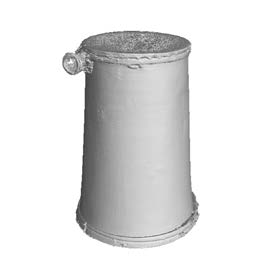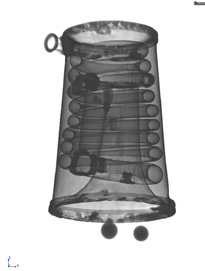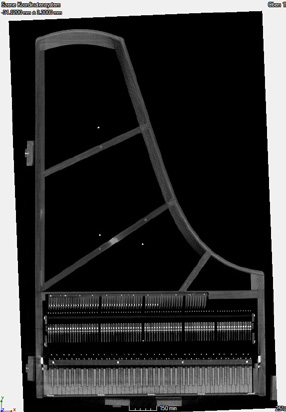Looking into a basset horn
As part of the MUSICES project, 3D computed tomography (CT) is being used to X-ray historical musical instruments from the collection at the Germanisches Nationalmuseum in Nürnberg. For the first time, they are drawing up a guideline for producing optimum images and measurement results. The results will be published on the Internet.



Looking inside a violin, fortepiano, basset horn, or similar instruments provides us with a solid foundation for determining the condition of an instrument – for restorers, conservators, musicians, museum educators, and instrument makers these images are thus invaluable. Currently, however, there are no measuring standards as to the best way to examine historical musical instruments using 3D computed tomography. To fill this gap is precisely the aim of the research project MUSICES: researchers at the Fraunhofer Development Center for X-ray Technology EZRT – a division of the Fraunhofer Institute for Integrated Circuits IIS – are, in tandem with the Germanisches Nationalmuseum in Nürnberg and the chair for X-ray microscopy at the University of Würzburg, developing guidelines that museums around the world can use to digitize various classes of instruments with comparable image quality.
Complex interaction
This is no trivial matter: a large number of parameters such as the radiation dose, exposure time, measurement distance, measurement duration, composition of the CT system, and algorithms for calculating the 3D data records must all be taken into account. During the examination, the objects are positioned on a rotary table between the X-ray source and the detector. A specially developed bracket fixes the instrument tightly in position. The X-rays penetrate the rotating object; depending on material thickness and density, different radiation doses are required. The scan can be a time-intensive matter – X-raying a violin in full, for example, with a resolution of less than 50 μm can take up to 20 hours. The CT system creates thousands of individual images that, when put together, create a three-dimensional picture.
Virtual museum online
The digital images will contribute to a type of virtual online museum, making these valuable instruments accessible to everybody. Most of these highly sensitive original pieces are stored in underground vaults – the Germanisches Nationalmuseum alone has an inventory of over 2500 old instruments.
More than 100 instruments from previous centuries have already been digitized by the team, from the box trumpet to the mouth organ and the square piano. The virtual museum will include all the CT data, but also a detailed documentation of the measuring procedure, including all its steps. In the medium term, the experiences and lessons learned from the project can be transferred to other cultural assets such as e.g. scientific instruments like telescopes.
Last modified: